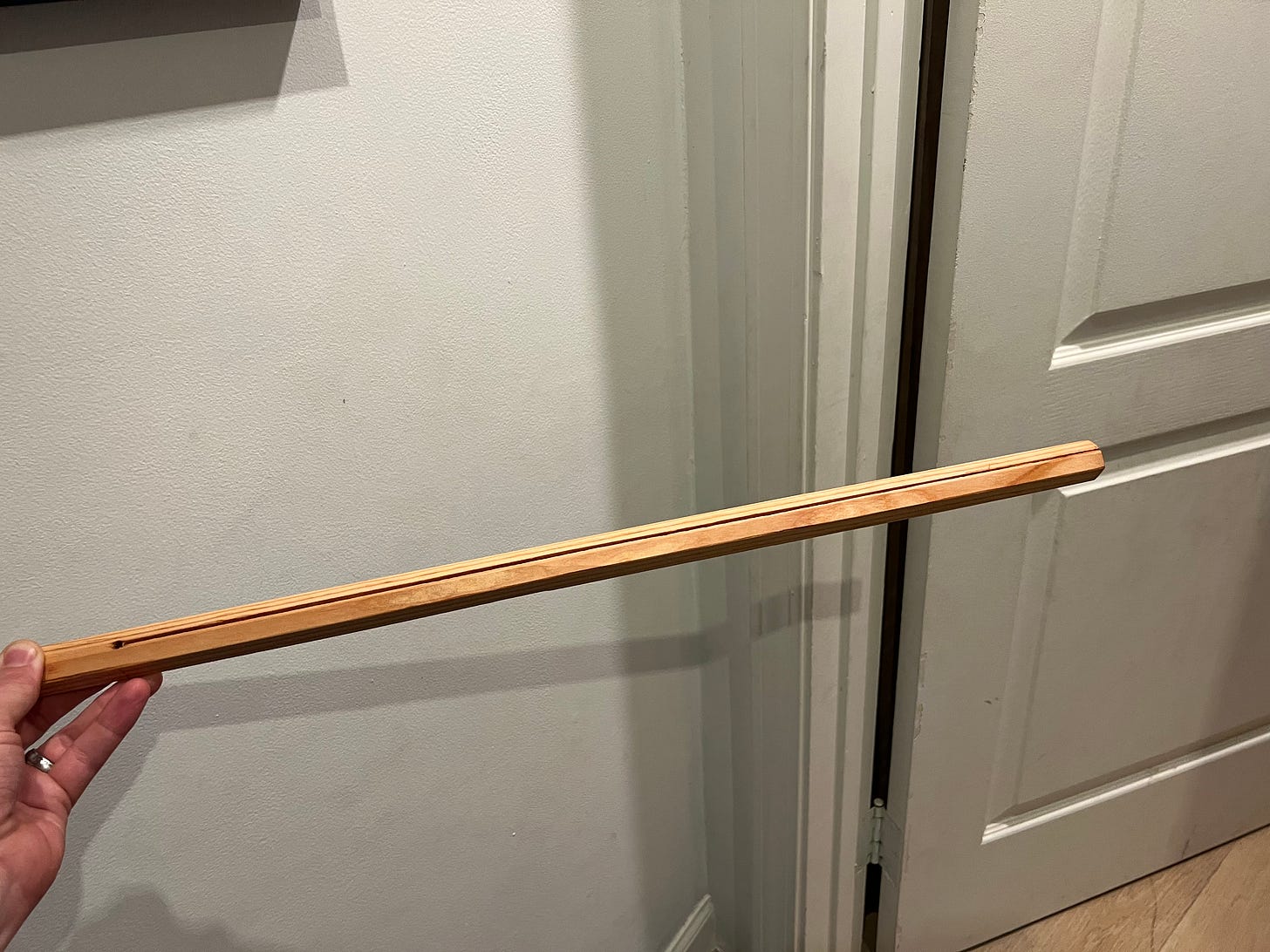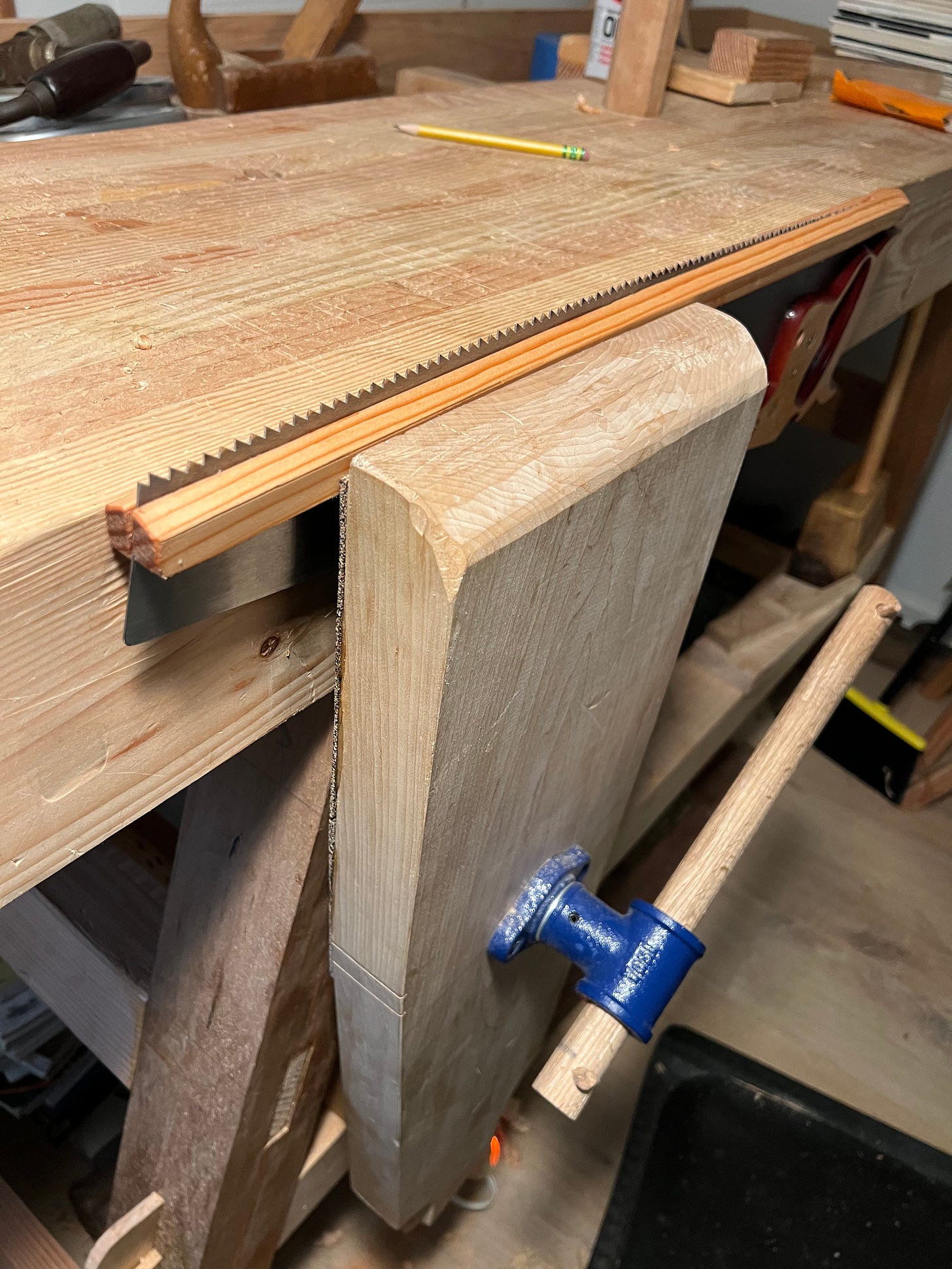It’s 2016. My wife wakes up in the middle of the night to see me digging through her closet. She turns on a light.
“Frew, what is happening?”
I approach the bed with a Don Draper demeanor. I have to make my pitch. It’s important that she know.
“Homeschoolers.” A brief pause for profundity. “Their teachers wake them up.”
She doesn’t understand, never will.
I’m frustrated. Embarrassed? I start to walk back my words because I begin to realize that I myself don’t fully understand why I needed to tell her this so urgently.
…and what was it that I needed from the make up bin in the closet again?
It’s slipping away.
Sleep deprivation is no joke. You have to keep your tools sharp.
When I started woodworking I was intimidated by sharpening. I was worried I was going to make tools worse, rather than better. This was a handicap for longer than it should have been.
Early in 2023 Christopher Schwarz published Sharpen This and I jumped to get it. It is excellent. I read the PDF over a couple of days and replaced my (very poor) diamond stones with some Arkansas Stones. In the book Chris talks about sharpening with a honing guide. Using a honing guide ensures that the final angle of your edge is consistent, but it takes time to set up. You have to install it on the chisel (or plane iron) and make sure that the projection is the right length.
If someone mentions a shop made tool, and they never use it or anything like it, it’s probably not a very good shop made tool.
Chris shows a jig to help set up the honing guide. The jig is trivial, and in retrospect obvious. You make a piece of wood with a gap the length of the required projection; once you the jig measuring the projection length is much faster. This reduces the hassle required to sharpen. Anything I can do to make myself more willing to sharpen is worth doing.
Eventually I decided to learn to sharpen freehand. Some of my tools cannot work with a honing guide; my narrow chisels (1/4” and 1/8”) won’t work with the guide. The time it took to install the honing guide made me drag my feet on sharpening. I wanted to be more willing to sharpen, so I learned to sharpen freehand.
I’m still learning, but I sharpen all of my chisels and plane irons freehand and usually sharpen three tools in about twenty minutes. If I had a dedicated sharpening location it would be even faster; I have to take out my stones and set everything up before sharpening and then put them back away after.
Sharpening chisels is easy, with a little practice. I am still intimidated by saws, despite having sharpened my rip saw twice now. The most recent time I sharpened it I made a basic saw vise I’d seen Paul Sellers use.
I have seen many saw vises on the internet but only Paul’s was simple and something I saw him actually use. Here’s a tip: if someone mentions a shop made tool, and they never use it or anything like it, it’s probably not a very good shop made tool.
There’s a poignant life lesson about sharpening. Many woodworking books start off talking about how to sharpen your tools. Sharpening is not woodworking, but being able to sharpen is critical to your success as a woodworker.
Most of the tools I use (planes and chisels) are easy to sharpen, and a few minutes of sharpening will make the following hours of work go better. Sharpening a saw is a hassle, but the difference between a sharp saw and a dull saw is mind blowing.
Nothing in life is quite as easy as sharpening and has such immediate payoffs, but many similar tasks spring to mind. Exercise. Sleep. Eat well. These basic tasks aren’t glamorous but ensure that the mechanism of my body is ship shape.
Stay sharp.






